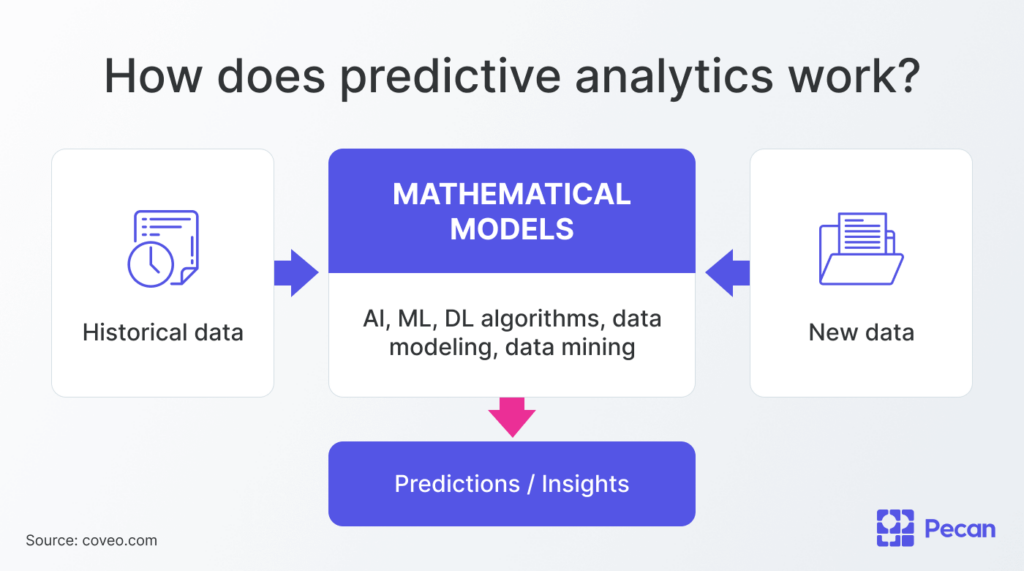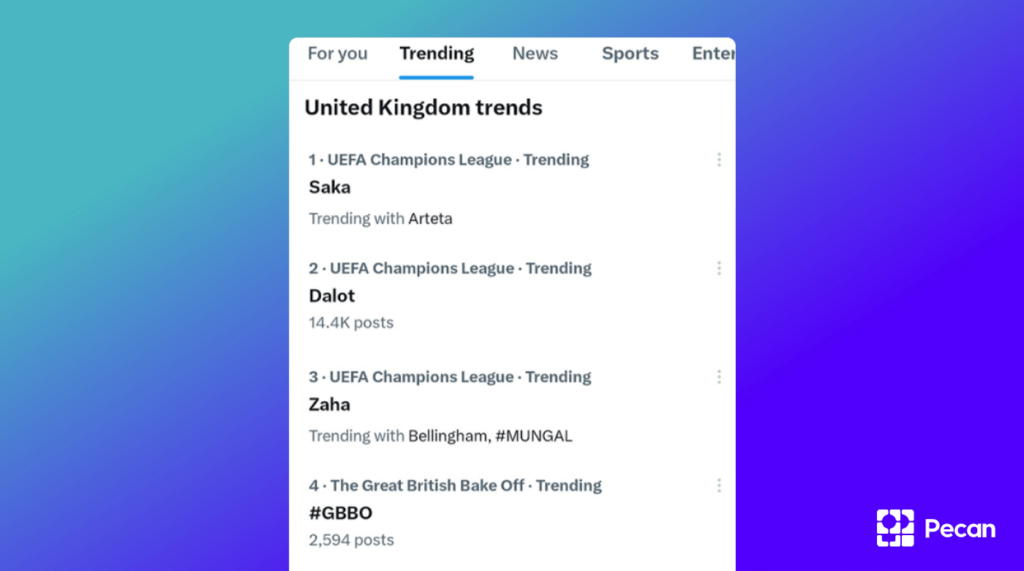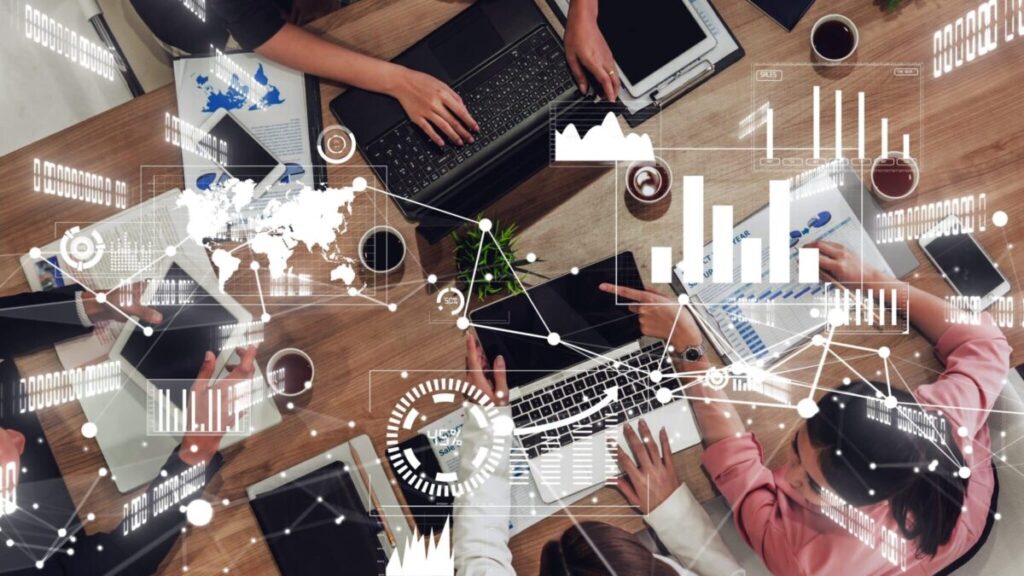There are two kinds of business leaders in this world. The ones who find themselves constantly playing catchup, taking a reactive approach to business challenges that come their way. The others use foresight and precision to tackle these challenges and are prepared to meet modern business demands head-on.
No marks for guessing which kind sees greater success. We all know the answer. The more important question is: How do you get there?
Imagine having the power to foresee future needs and events and to understand why they're likely to occur. More importantly, what if you could take proactive steps to tackle them head-on?
In this article, we'll explore the world of predictive AI and show you how it can revolutionize decision-making and boost efficiency so you can catapult your business into a future where problems can be anticipated and solutions are ready.
What is predictive AI?
Predictive AI relies on data — massive amounts of present and historical data — and analyzes it to arrive at the likelihood of future activity or occurrences. Ordinarily, these enormous amounts of data would be practically impossible to crunch manually or using regular software. Only the sophistication and agility of predictive AI algorithms can achieve this feat.
So, how does this help businesses? Predictive AI can help them process an extraordinary amount of data to forecast future economy and industry trends, reasons behind likely events, and the associated risks.
With such knowledge, businesses can devise effective plans to combat challenges head-on — should they arise — to be better prepared to respond to them. Consequently, they can serve their target audiences better and gain a competitive edge.
Contrary to popular belief, this proactiveness is no longer a luxury but a necessity. The global lead of Applied Intelligence at Accenture, Sanjeev Vohra, says, “Adopting AI at scale and embedding it deeper in all aspects of business is no longer a choice, but a necessity and opportunity facing every industry, organization, and leader.” Research reveals the biggest businesses in the world that discussed AI on their earnings calls were 40% more likely to see their share prices increase.
Support for AI use
As an example, consider the retail industry, where predictive AI is widely used to predict, simulate, and automate strategies governing pricing, promotion, stock, and assortments. This helps retailers offer more personalized and tailor-made customer experiences.
In a landscape where 54% of consumers are willing to share anonymized personal data to help improve AI-based products and decision-making, this is no longer just nice-to-have but a must-have.
The accuracy of predictive AI algorithms enables businesses to create customer experiences that are a cut above the rest. With offerings that are tailor-made to fit customer needs, it’s only natural that customer loyalty and retention may grow significantly.
It’s hardly surprising, therefore, that AI in the retail market is expected to grow at a CAGR of 34.4% from 2020 to 2027 to reach $19.9 billion by 2027.
How does predictive AI work?
Predictive AI uses machine learning and statistical algorithms to forecast patterns, behavior, trends, and predictions from large data sources. It all starts with identifying or defining the problem. For example, a retailer may want to use it to determine their optimal stock levels during an upcoming holiday season.
To achieve this, the predictive AI model must be fed a continuous flood of past (or historical) organizational or customer behavior data. AI algorithms will work on this raw data to eliminate anomalies, outliers, or missing info that could skew the results incorrectly.
Precision is key here, but past data can only help somewhat. To accurately draw predictions, the model will also need to factor in uncertainty. (Think how COVID-19 altered customer behavior.)
As such, a variety of techniques or tools like decision trees, regression models, and machine learning help to factor in such deviations, allowing predictive AI models to course correct until acceptable results are achieved.
Predictive AI vs. generative AI
So far, we’ve covered how predictive AI processes data — along with machine learning and other techniques — to predict future events or outcomes.
While on the topic, it may be worth touching upon what generative AI means and how it differs from predictive AI. After all, Gartner projects that by 2025, 10% of all data will have been produced by generative AI. For perspective, in 2022, this was less than 1%.
Put simply, Generative AI uses algorithms to analyze patterns in a given data set and create new content similar in structure and style to the original data. Let’s explain the difference between predictive and generative AI with some examples.
- Example of predictive AI. The e-commerce giant Amazon employs predictive AI to analyze historical organization data, weather patterns, customer behavior, etc., to forecast the demand for its products in different geographical regions. Not only does this help it optimize its stock levels, but it also reduces delivery times, resulting in lower costs and greater customer satisfaction.
- Example of generative AI. The Generative Fill feature in Adobe Photoshop is an example of generative AI that allows users to add or remove an area or object from an image in a non-destructive way with just text commands. The original image isn’t affected, but the algorithm can seamlessly fill gaps by analyzing neighboring pixels. This way, artists can explore new ideas, looks, or styles without altering the original.
An example of generative AI with Adobe Photoshop
Benefits of predictive AI
Now that we’ve covered the basics of predictive AI, let’s take a quick look at its benefits for businesses.
Improved efficiency
Uber uses predictive AI to implement surge pricing. It does this by analyzing tons of historical data such as ride durations, pickup/drop-off locations, day of the week, time of day, rush hours, holidays, etc., to predict future demand patterns for its rides.
Not just that. It also considers unforeseen events like traffic congestion, weather conditions, and real-time info like live driver locations and ride requests. Using advanced machine learning algorithms, the company employs surge pricing so that more drivers are available in high-demand areas during peak times, thus ensuring the right balance between supply and demand.
Pattern recognition
Global payment fraud will cost financial institutions $40.62 billion by 2027. It shouldn’t come as a surprise that many companies in the financial services industry are using predictive AI for fraud detection.
PayPal, for example, uses predictive AI to analyze the data generated from its transactions — about 15 billion of them — to look out for suspicious patterns, red flags, or other such anomalies to help fight against potential fraud. Not only does this help minimize financial losses for merchants and consumers, but it also reduces false positives and fraud prevention costs.
Improved decision-making
As might be clear, one of the most notable benefits of predictive AI is that it helps you make more data-driven business decisions. Consider UPS, for example. The company employs predictive AI to optimize its delivery routes so that every package can be delivered most efficiently.
Its predictive algorithms analyze historical delivery data, weather patterns, traffic conditions, size, weight, the destination of packages, and so on to find the most efficient routes to minimize costs while accounting for unplanned or unforeseen events (e.g., congestion, bad weather, etc.) in real time.
UPS’ algorithms analyze more than a billion data points daily to help deliver packages more quickly and efficiently while giving customers improved visibility into ETAs.
Trend forecasting
X, formerly known as Twitter, uses predictive AI to determine trending topics and hashtags. The algorithm analyzes many data points, including your location, interests, the accounts you follow, and the volume of posts associated with a particular trend or hashtag, and then decides the rankings. This allows it to predict real-time trends so users can discover the latest trending news and relevant information.
In their own words, “Trends are determined by an algorithm and, by default, are tailored for you based on who you follow, your interests, and your location. This algorithm identifies topics that are popular now, rather than topics that have been popular for a while or daily, to help you discover the hottest emerging topics of discussion on Twitter.”
X identifies trending topics with predictive AI
Future planning
Predictive AI also finds application in the energy sector — particularly for detecting and fixing faults — so potential issues can be resolved before they create disruption. In the case of renewable energy, AI assesses contributing factors like bad weather that may hinder the supply so proactive steps can be taken to ensure uninterrupted transmission.
In addition, predictive algorithms can decrease any risks of asset failures by identifying any potential issues in real time so they can be fixed before causing a breakdown.
As you can see from the above examples, these amazing data-driven companies are using predictive AI to optimize their business processes. The good news is, with a solution like Pecan AI, you can too!
Predictive AI applications
Let’s look at some predictive AI applications across various industries and business sectors.
Marketing
Netflix uses predictive AI and machine learning to personalize the user experience with more tailored recommendations. It analyzes data such as people’s watch habits and preferences to provide them with such content recommendations. Netflix also uses predictive AI to analyze what characteristics make their content more successful and use it to create similar content, boost engagement, and reduce churn.
In their own words, “We invest heavily in machine learning to continually improve our member experience and optimize the Netflix service end-to-end…It also powers our advertising spend, channel mix, and advertising creative to find new members who will enjoy Netflix.”
Consumer services
A wellness services company in the US integrated Pecan’s predictive AI into its call center campaigns and saw a 12% increase in repurchases, a 35% uplift in sales conversion rate, and incremental revenue of more than $400K in just two months.
The company wanted to improve its customer outreach to keep getting repeat business from them. However, relying on descriptive analytics and rule-based logic couldn’t give them the kind of personalization they were looking for from their campaigns.
Partnering with Pecan, however, provided a much better way of forecasting customer interests. The solution analyzed the company’s historical sales data to identify subtle patterns in customer behavior.
This allowed the company to predict which customer segments would most likely buy again from them in 30 days. Not only were they able to maximize sales but also provide an improved customer experience by being able to anticipate their needs and desires.
Weather forecasting
The National Oceanic and Atmospheric Administration (NOAA) in the United States uses predictive AI and supercomputing to track hurricanes. They provide critical forecasts and warnings during hurricane seasons. By combining environmental data with satellite feed, they can predict weather patterns more accurately. This will be a significant stride towards improving public safety, agriculture, and the economy.
Predictive AI is also used in setting content triggers for weather apps. For instance, it may be programmed to notify a user when the temperature in a town is expected to exceed a certain limit for a particular time of the day. This enhances the awareness and preparedness of users towards harsh or harmful weather conditions.
By analyzing real-time data, it can identify the possibilities of lightning strikes, flash floods, or stormy winds. This enables sending in-app notifications alerting users to evacuate or find shelter quickly.
Financial services
Predictive AI is widely used in financial services to detect fraud, assess credit risk, etc. Lending platforms like Upstart use predictive AI to estimate the creditworthiness of borrowers in a manner that’s more accurate than credit scores. This helps them reduce approval times and lowers the risk of fraud and default rates.
With predictive AI, banks can identify the best investment options and enhance their customer targeting. It analyzes the past movement of stocks and real-time market data to predict their future course. Banks can also use predictive AI to provide standardized solutions to repetitive issues to their customers without needing any manual intervention.
Retail
Walmart is known for using predictive AI to improve shopping and employee experiences. They analyze historical sales data, weather forecasts, and local events to predict consumer demand, optimize inventory, and minimize overstock or out-of-stock situations.
With predictive AI, Walmart can forecast which products will be in the highest demand, say over the weekend, on Halloween, or during a sports event in the city. The right product has to be stocked on the right shelf at the right time!
Future-proof your business with predictive AI
As you can see, from Netflix to Walmart, all the leading companies worldwide use predictive AI to improve their business processes or operations. AI finds varied applications today in marketing, financial services, retail, weather forecasting, consumer services, healthcare, and many other industries.
To learn more about how AI-powered predictive analytics can help your business — whether to reduce churn, provide better shopping experiences, cut costs, optimize inventory levels, or plan for the future — request a demo today.







